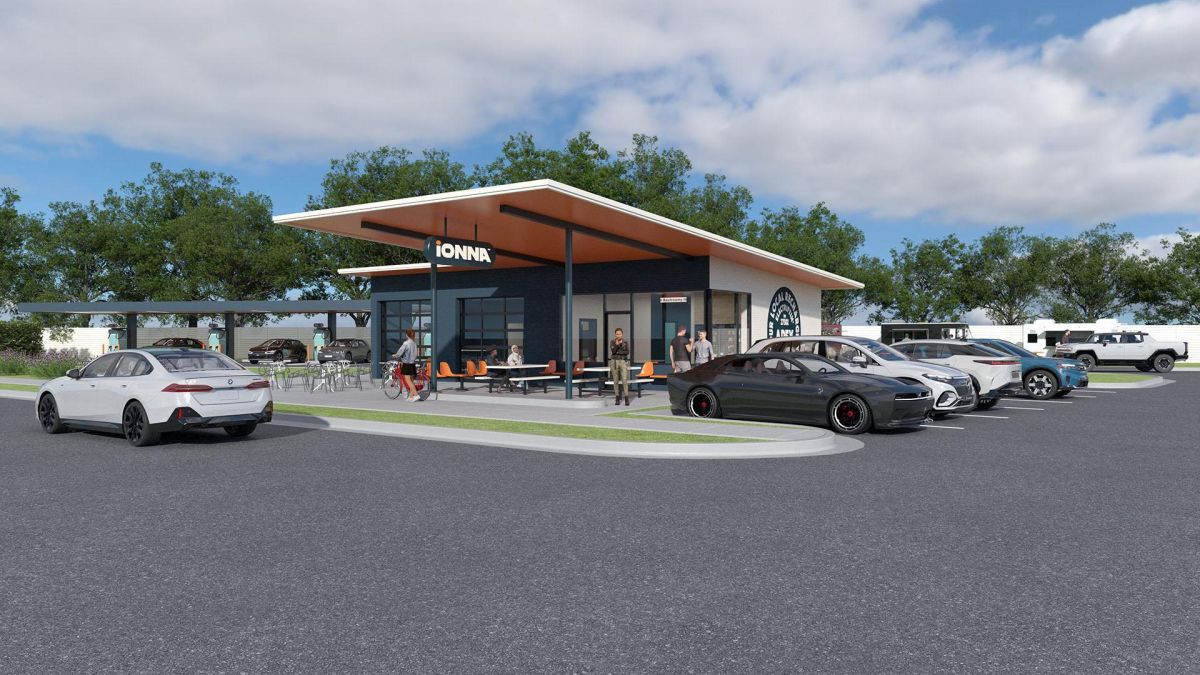There are now more than 5.8 million electric vehicles (EVs) operating in the U.S., according to research conducted by the Alliance for Automotive Innovation. Dan Bowerson, vice president of Energy & Environment Policy at the Alliance for Automotive Innovation, said this equates to about 2% of all vehicles on the road. Internal combustion vehicles (ICE) vehicles and hybrids represent the remainder -- just over 97%.
During a recent webinar, Bowerson provided an overview of the Alliance’s Q4 2024 “Get Connected Report,” highlighting information about EV adoption and charging infrastructure. The national organization represents the auto industry and is committed to a cleaner, safer and smarter personal transportation future.
The types of vehicles referred to as electric include hybrid electric vehicles (HEVs), which use a gasoline engine with an electric motor; battery electric vehicles (BEVs), which use an electric motor and battery to power the vehicle; plug-in hybrid electric vehicles (PHEVs), similar to HEVs but with a larger battery that can be charged by plugging into an internal power source; and fuel-cell electric vehicles.
Over the last five years, there has been significant growth of EVs, from 2.3% market share in 2020 to 10.2% in 2024, according to the Alliance. In 2024, 1.58 million EVs were sold, the highest year on record, with 433,843 sold in the fourth quarter.
“Almost 11% of light-duty vehicle sales were EVs,” said Bowerson. “This is the highest quarter that we've had.”
This is a 0.3 percentage point market share increase from the third quarter of 2023, resulting in about 24,000 vehicle sales.
 Dan Bowerson.
Dan Bowerson.
Light trucks, which include utility vehicles, minivans and pickups, had the largest market share at 81%, with utility vehicles making up 72%.
There were 144 different EV models sold in the fourth quarter of 2024. BEVs make up the majority of those (83); however, Bowerson noted PHEVs have also been growing (58). The remainder were fuel-cell electric vehicles.
“This is a 0.7% percentage point market share increase over 2023, which results in about 160,000 more electric vehicles sold in calendar year 2024 than sold in calendar year 2023,” Bowerson explained.
However, there has been a slower growth rate overall from 2023 to 2024, which he attributes to early adopters already purchasing an EV and having access to home charging.
According to Kelley Blue Book, prices have remained higher for EVs than the average industry vehicle or typical light-duty vehicle by about $6,000.
“Even with the electric vehicles and some of the federal and state incentives, that makes up about 14%,” said Bowerson, referring to the higher purchase cost.
Analyzing a state-by-state breakdown of EV adoption and infrastructure, he said three states had higher than 20% EV sales: California, Colorado and Washington. There were more than 17 states with less than 5% of EV sales (listed in descending order): Kansas (4.96%), Wisconsin (4.80%), Nebraska (4.55%), South Carolina (4.35%), Montana (4.15%), Kentucky (3.85%), Iowa (3.75%), Oklahoma (3.70%), Alaska (3.39%), Alabama (3.26%), Wyoming (2.77%), South Dakota (2.71%), Arkansas (2.65%), West Virginia (2.29%), Louisiana (2.15%), Mississippi (1.90%) and North Dakota (1.81%).
Bowerson talked about the change in the powertrain market from Q4 2023 to Q4 2024.
“We saw a significant increase in hybrid electric vehicles, almost 4%,” he shared.
BEVs grew by 0.6%, while the gas and diesel market share dropped 4.3%. There wasn’t a big change in the PHEV market or with fuel-cell electric battery vehicles.
When monitoring the market share by powertrain since 2016, Bowerson noted the largest increase is traditional HEVs. The largest portion of the growth from 2023 to 2024 was the pure battery electric segment, with PHEVs staying constant during the same timeframe.
Bowerson also discussed the current charging infrastructure. When analyzing a state-by-state breakdown of the EV charging publicly available today, he said there is a direct correlation between the states that have a higher number of publicly available charging stations and those that have higher EV adoption rates.
At the end of 2024, there were just under 70,000 publicly available EV charging stations in the U.S., representing about 195,000 different ports; 25% of those stations are in California. They include 59,104 stations with 145,019 Level 2 ports, 11,747 stations with 49,748 DC Fast Ports, and 57 hydrogen refueling stations -- 56 of which are in California.
To encourage future EV adoption, Bowerson said that charging must be ubiquitous, reliable and accessible.
“While we've continued to see growth in the publicly available charging, it has not kept pace with electric vehicle sales to support a larger adoption rate of EVs,” he said. “It's going to take a lot more access to charging and the prices to come down as we continue to grow out and hit that mass market of electric vehicle sales.”
The National Renewable Energy Laboratory, funded through the Department of Energy, analyzed the charging needed (private, Level 2 and DC fast chargers) to support 50% EV sales by 2030, representing 33 million electric vehicles.
The organization found that just over 1.2 million publicly available Level two and DC fast charging would be necessary to meet this demand.
“With just under 195,000 charging ports currently installed, 481 chargers would need to be installed every day for the next six years to reach 1.2 million stations [between the end of 2024 and Dec. 31, 2030],” said Bowerson.
He said this equates to installing three new publicly available EV charging stations every 10 minutes through the end of 2030.
“We have a significant way to go if we were to support 50% EV sales,” he stressed.
When examining the publicly available charging by county, it was found that 27% of 3,144 U.S. counties -- 854 counties -- have no access to public charging, and 41% have five or fewer charging ports. One-third of all charging is located in 25 counties, and 44% have no DC fast charging available.
Bowerson said automakers have made significant investments in the charging infrastructure to ensure the charging experience is what customers expect. He referenced some of the partnerships formed, such as IONNA, a joint venture established by eight vehicle manufacturers: BMW, General Motors, Honda, Hyundai, Kia, Mercedes-Benz, Stellantis and Toyota. Their mission is “purpose-built to lead, innovate, create and drive forward a redefinition of charging as an end-to-end integrated experience.”
The Alliance also looked at EV registrations as a percentage of total vehicles in operation by county in 2024. They learned that of the 288 million vehicles in operation (VIO), 5.8 million are electric. Half of all registered EVs are located in 41 counties and 39 counties have no registered EVS. Only 493 counties have an E-VIO rate greater than 1% and 188 counties have one greater than 2%.
“There's a disparity between some of where we're seeing EV uptake and other counties where we're seeing much less,” noted Bowerson.
Research showed that counties with the highest EV registration rates – the top 10%, or 314 counties -- are also some of the wealthiest.
The average median household income for the top 10% of EVs in operation is $78,259. Conversely, for the counties with the lowest percent of EVs for the total vehicles in operation, the average median income is $45,000.
The Alliance partnered with SBD Automotive to evaluate some of the financial incentives and what some consider “disincentives” nationwide.
Twelve states either partially fund or fully fund financial incentives to purchase EVs. Thirty-five states impose fees or road user taxes that can be used for programs like replacing gas tax incentives. Five states have both: California, Colorado, Illinois, Pennsylvania and Washington.
Bowerson noted the higher registration fees for EVs. “That's meant to replace the gas tax that vehicle is no longer paying,” he explained.
In summary, he acknowledged that BEV sales have slowed.
“The infrastructure is not where it needs to be and EV purchase prices remain higher than conventional vehicles,” he shared.
At the same time, he said the number of new EV models continues to grow.
“There are significant areas that we need to address if we're going to have increased EV adoption,” he said. “Geography, economic conditions, access to charging and EV policies all play a role.”
To read the full report, visit the Alliance for Automotive Innovation's website.













Stacey Phillips Ronak